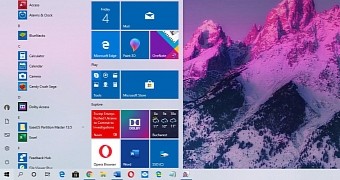Microsoft has released new cumulative updates for all versions of Windows 10, including the latest stable release called May 2019 Update.
Surprisingly, these cumulative updates are flagged as security patches, even though they do not land on the typical monthly Patch Tuesday cycle when Microsoft releases updates to address security vulnerabilities.
Microsoft explains that these updates come to expand the security patches originally published on September 23 and resolving an Internet Explorer flaw.
“This is a required security update that expands the out-of-band update dated September 23, 2019. This security update includes the Internet Explorer scripting engine security vulnerability (CVE-2019-1367) mitigation and corrects a recent printing issue some users have experienced,” Microsoft says.
Two fixes in these updates
According to the official changelog, there are two changes in these updates, one of which resolves a printing bug discovered in the latest cumulative updates.
“Addresses an intermittent issue with the print spooler service that may cause print jobs to fail. Some apps may close or generate errors, such as the remote procedure call (RPC) error,” Microsoft says.
The second fix resolves a bug breaking down the installation of Features on Demand, with the process failing with error “The changes couldn’t be complete. Please reboot your computer and try again. Error code: 0x800f0950.”
The list of cumulative updates shipping today is the following:
| Windows 10 version 1903 - KB4524147 (build 18362.388) |
| Windows 10 version 1809 - KB4524148 (build 17763.775) |
| Windows 10 version 1803 - KB4524149 (build 17134.1040) |
| Windows 10 version 1709 - KB4524150 (build 16299.1421) |
| Windows 10 version 1703 - KB4524151 (build 15063.2079) |
| Windows 10 version 1607 - KB4524152 (build 14393.3243) |
| Windows 10 version 1507 - KB4524153 (build 10240.18335) |

 14 DAY TRIAL //
14 DAY TRIAL //